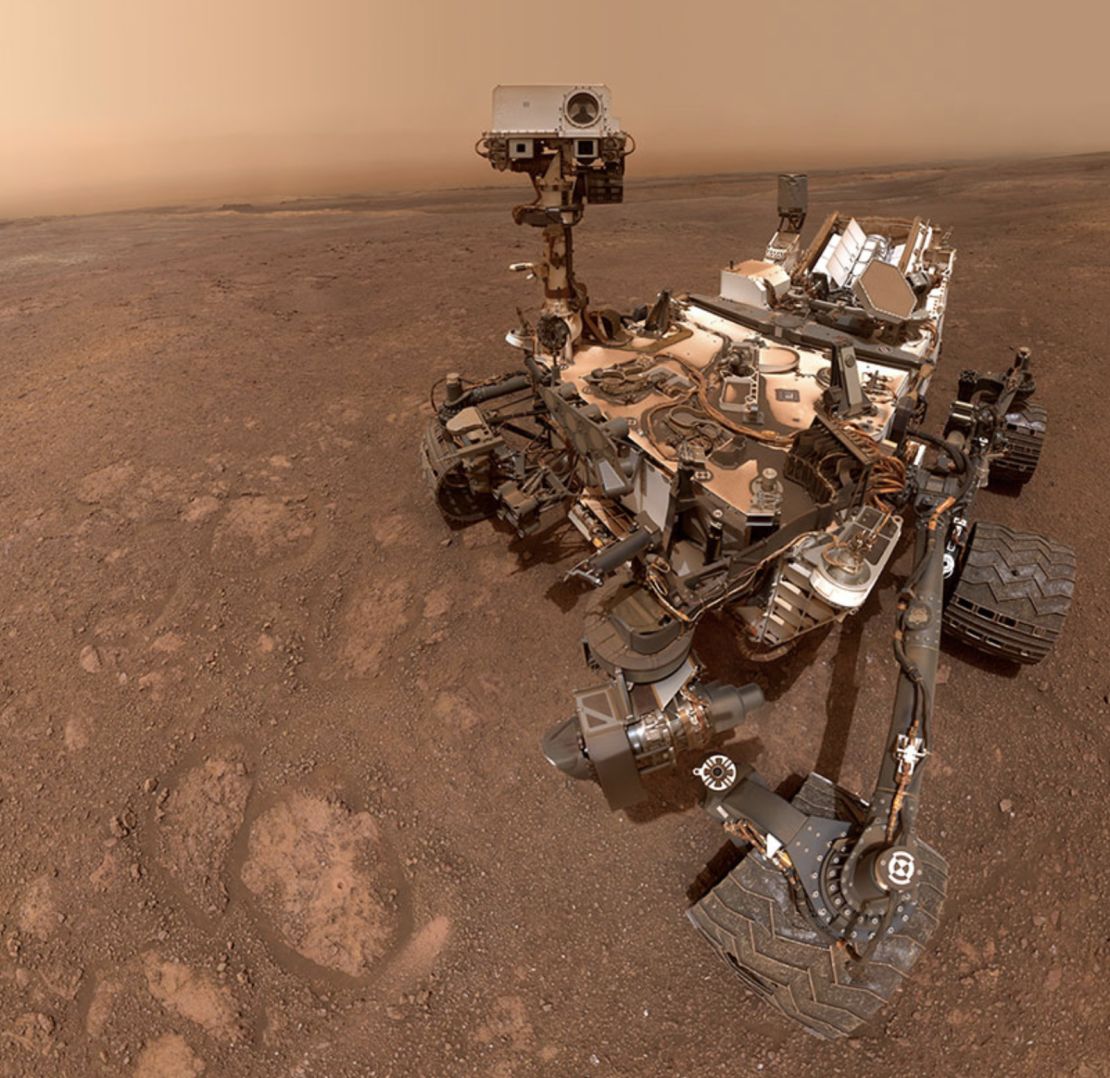Sign up for CNN’s Science of Miracles newsletter. Explore the universe with news of fascinating discoveries, scientific advances and more.
CNN
–
When the sun unleashed an extreme solar storm and hit Mars in May, it engulfed the red planet in auroras and a flood of charged particles and radiation, according to NASA.
The sun has shown more activity over the past year as it approaches the peak of its 11-year cycle, called solar maximum, which is predicted to occur later this year.
In recent months, there has been an increase in solar activity, such as X-class flares, the strongest of solar flares, and coronal mass ejections, or large clouds of ionizing gas called plasma and magnetic fields bursting from the atmosphere. the exterior of the sun.
Solar storms that reached Earth in May sparked colorful auroras that danced across the sky over areas that rarely experience them, such as Northern California and Alabama.
The storms came from a massive group of sunspots that happened to face Earth. That group of sunspots then spiraled toward Earth’s cosmic neighbor: Mars.
Astronomers used the plethora of orbiters circling the red planet, as well as rovers moving across its surface, to capture the effects of a solar storm on Mars — and better understand what kind of radiation levels astronauts might experience on Mars. the red planet. in the future.
The most extreme storm occurred on May 20 after an X12 flare launched from the sun, according to data collected by the Solar Orbiter spacecraft currently studying the sun.
The massive explosion sent X-rays and gamma rays hurtling toward Mars, and a coronal mass ejection was quickly launched in the wake of the flare, spewing charged particles toward the red planet.
X-rays and gamma rays traveled at the speed of light and reached Mars first, followed by charged particles within tens of minutes, according to scientists tracking activity from the moon at NASA’s Mars Space Weather Analysis Office at the Mars Flight Center. Goddard Space in Greenbelt, Maryland.
The Curiosity rover, currently exploring Gale Crater south of the Martian equator, took black-and-white images using its navigation cameras during the solar storm. The white, snow-like streaks seen in the images are the result of charged particles hitting Curiosity’s cameras, according to NASA.
The energy from the solar particles was so strong that the star camera on board the Mars Odyssey orbiter, which helps orient the probe as it circles the planet, momentarily shut down. Fortunately, the spacecraft was able to turn the camera back on within an hour. The last time Odyssey encountered such extreme solar behavior was during solar maximum in 2003, when an X45 flare flashed the orbiter’s radiation detector.

Meanwhile, Curiosity used the Radiation Assessment Detector, or RAD, to measure the amount of radiation hitting the planet during the storm. An astronaut standing next to the rover would have experienced radiation equivalent to 30 chest X-rays, which is not lethal, but is the largest such increase in radiation that the rover’s instrument has measured since landing nearly 12 years ago.
Understanding the maximum radiation that astronauts may experience on the red planet helps scientists plan how to protect those on future crewed explorations of Mars.
“House rocks or lava tubes would provide additional protection for an astronaut from such an event. In Mars orbit or in deep space, the dose rate would be significantly greater,” said Don Hassler, RAD principal investigator in the Solar System Exploration and Science Division of Southwest Research Institute in Boulder, Colorado, in a statement. “I wouldn’t be surprised if this active region on the Sun continues to erupt, meaning even more solar storms on Earth and Mars in the coming weeks.”
The MAVEN orbiter, short for Mars Atmosphere and Volatile EvolutioN, had an aerial view of auroras dancing in ultraviolet light over Mars during the solar storm. The orbiter launched to Mars in 2013 to study how the red planet has lost its atmosphere over time and how space weather created by the sun interacts with the Martian upper atmosphere.
But these auroras look very different from the northern lights, or aurora borealis, and southern lights, or aurora australis, that occur on Earth.
When energetic particles from coronal mass ejections reach Earth’s magnetic field, they interact with gases in the atmosphere to create colorful lights in the sky, especially near its poles.
But Mars lost its magnetic field billions of years ago, meaning the planet has no shield from incoming solar particles. So when the particles hit the thin atmosphere of Mars, the reaction results in auroras that engulf the planet.
“Given Mars’ lack of a global magnetic field, Martian auroras are not pole-centered as they are on Earth, but instead appear as a ‘diffuse global aurora’ associated with the ancient, magnetized crust of March,” wrote Deborah Padgett. , the Operational Product Generation Subsystem task lead at NASA’s Jet Propulsion Laboratory in Pasadena, California, on the space agency’s Curiosity rover blog.
According to NASA, future astronauts may be able to witness these Martian light shows one day.
By tracking data from multiple Mars missions, scientists were able to watch how the solar storm unfolded.
“This was the largest energetic solar particle event that MAVEN has ever seen,” MAVEN space weather leader Christina Lee of the University of California, Berkeley’s Space Science Laboratory said in a statement. “There have been several solar events in the past weeks, so we were seeing wave after wave of particles hitting Mars.”